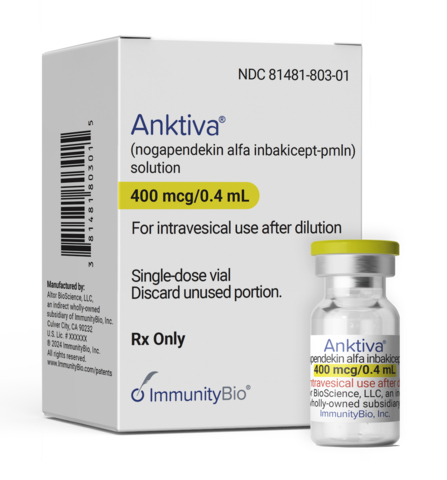For decades, formulation scientists have relied on the assumption that common pharmaceutical excipients are biologically inert. Now, results from a new study conducted by researchers at the UC San Francisco (UCSF) School of Pharmacy and the Novartis Institutes for BioMedical Research (NIBR), have challenged drugmakers’ understanding of the effects of excipients.
Excipients can take many forms, such as bulking agents, binders, coatings and colourants, and they are chosen based on their ability to aid in drug delivery, administration and even in pill identification and prevention of counterfeiting. For example, Advil tablets contain 18 inactive ingredients alongside ibuprofen, the drug’s active pharmaceutical ingredient (API).
But just how inert are these excipients? Using a database developed by Brian Shoichet, PhD, a professor in the Department of Pharmaceutical Chemistry at UCSF, Shoichet and his team worked with Laszlo Urban, PhD, global head of preclinical safety profiling at NIBR, to identify possible interactions between commonly-used excipients and human enzymes and receptors.
After screening nearly 3,300 pharmaceutical excipients, the research team singled-out 38 supposedly inert compounds, which had the potential to interact with 134 different enzymes and receptors found in humans. According to the team – who published their findings in the journal Science – their research is the first to investigate whether these pervasive, “inactive” compounds have any effects on key molecular targets involved in health.
“These data illustrate that while many excipient molecules are in fact inert, a good number may have previously unappreciated effects on human proteins known to play an important role in health and disease,” Shoichet said. “We demonstrate an approach by which drugmakers could, in the future, evaluate the excipients used in their formulations, and replace biologically active compounds with equivalent molecules that are truly inactive.”
Using computer modelling and the European Molecular Biology Laboratory’s (EMBL) ChEMBL database of bioactive molecules, Shoichet’s research team sought to investigate excipients whose molecular structure was similar to molecules which bind to over 3,000 different human proteins. While their initial analysis returned a result of two million different interactions, the scientists pared that number down to 20,000 potential excipient-human protein interactions, which were predicted to be more likely to occur.
From this computational work, a total of 69 excipients predicted to have the strongest likelihood of interacting with human target proteins were chosen for further in vitro study, which was conducted by Bryan Roth, PhD, a professor of pharmacology at the University of North Carolina, Chapel Hill, and Kathy Giacomini, PhD, a professor of bioengineering at UCSF and co-director of the UCSF-Stanford CERSI center. The results of their interaction study identified 19 excipients which interacted with 12 human proteins in a total of 25 different configurations. While the number of interactions was small, the human proteins involved are considered to be pharmacologically relevant, suggesting these excipients could be behind certain adverse effects when combined with APIs.
“Our study was meant to expand on anecdotal evidence that excipients may be the culprits of unexpected physiological effects seen in certain drug formulations,” said study lead author Joshua Pottel, PhD, a former postdoctoral researcher in the Shoichet lab who is now President and CEO of Montreal-based Molecular Forecaster Inc. “It was not so surprising to find new properties of understudied compounds that have been grandfathered in as ‘inactive’ for decades, but it was surprising to see how potent some of these molecules are, especially considering the fairly high quantities sometimes used in typical drug formulations.”
In addition to the work done at the academic centers, target screening experiments performed at NIBR further support the findings that some excipients may be more biologically active than previously thought. Using a drug-induced toxicity panel of human proteins, they identified 32 excipients which participated in 109 different interactions with target proteins. As this test is often used to demonstrate the safety of new drug candidates, the results have concerning implications for excipients currently used in large quantities in some drug formulations.
“After decades with little innovation in how drugs are formulated, we see this as an opportunity for a public-private partnership between academic, regulatory and pharmaceutical communities to seek new and better excipients, and we demonstrate an approach to doing so,” Shoichet said. “Given the challenge this work presents to the pharmaceutical status quo, we are grateful for the forward-thinking support the project has received primarily from the FDA and through our collaboration with Novartis, in addition to the National Institutes of Health.”
When asked whether the interactions observed between some excipients and human protein targets could explain some of the differences in effectiveness seen in brand name drugs versus generics, Shoichet told Xtalks, “Potentially, though we haven’t shown that.”
He went on to explain that new drug formulations developed by innovator pharmaceutical companies are subject to strict safety controls. Problems could arise when generic manufacturers are allowed to switch excipients as long as the pharmacokinetics of the API remain unchanged.
“That assumes, however, that the excipients are as ‘inactive’ as they are classified to be,” said Shoichet. “If they have activity, especially if they have different activities, this could change things.”
Since many generics are as effective and well-tolerated as their originator, Shoichet went on to say, “most generics are unaffected by such excipient switching, and are safe for patients.”
The researchers acknowledge that studies in animal models will need to be performed to confirm the interactions identified between certain excipients and biological targets, and whether those interactions trigger adverse reactions. Perhaps some good news for drug developers is that there is much overlap between excipients used to perform the same function, which could allow for direct substitutions between those that interact with human proteins and those which are inert. However, the development of new excipients to perform certain functions in drug formulations will likely still be required to replace potentially bioactive excipients in use today.












Join or login to leave a comment
JOIN LOGIN